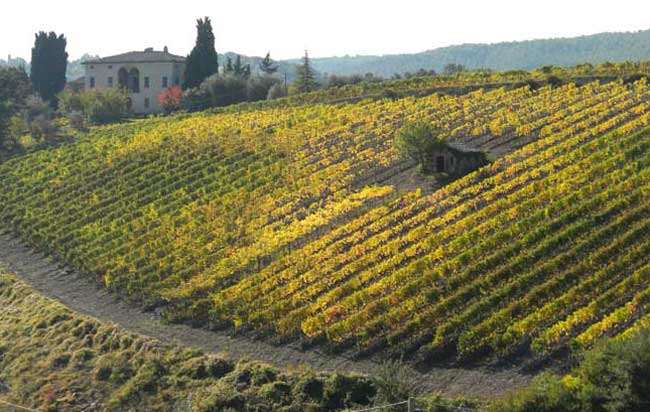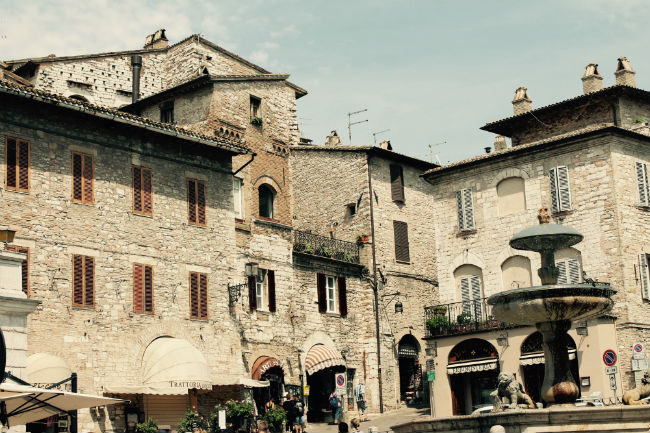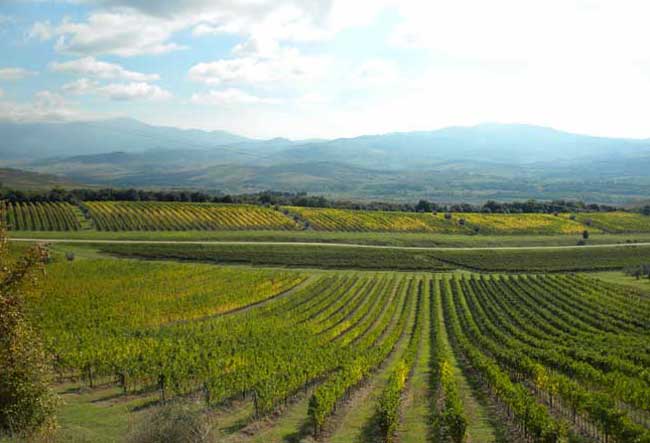Travel in Italy
As our journey unfolded, I found myself falling more in love with Italy’s rustic charm. Behind the Dolce and Gabbana glamour of Milan or the magnificent Colosseum of Rome was hidden the authentic Italy: sleepy Assisi, medieval Bologna, and the olive lined streets of Rufina.
Here’s a quick run-down of some of the lesser-known places in Italy that we discovered bypassing the typical towns of Rome, Florence and Venice and diving straight into some of this country’s greatest gems.

Travel in Umbria, Italy
When you think of rural Italy, the regions of Umbria and Tuscany immediately come to mind, conjuring images of rolling hills, vineyards, and olive oil. Yet, unlike its more sophisticated and popular neighbor, Umbria is down-to-earth, simple, and perhaps more genuine.
Our first encounter with Umbria, after driving north from the Amalfi Coast, was in the town of Spoleto with our AirBnB host, Nunzio. He didn’t speak any English, but since I had taught myself Italian during the past four months, I became our family’s representative to communicate in my broken Italian littered with verbs in the wrong tense.
“Ecco la cucina,” Nunzio gestures with his hand, and turns to me for translation. “The kitchen,” I fill in for my family.
His speech was slow, measured, and his smile warm, slightly abashed at his lack of English. His apartment was fully equipped with everything from personal bathrobes to shower caps, proof of the genuine hospitality that characterizes the Umbrian people.
While Tuscany developed under the influence of the Medici family and thus carries undertones of wealth and fame, Umbria’s heroes were Catholic saints, those who left their lives of comfort for the simple life, peregrinating through the mountainous districts of Umbria, cheerful and full of song.

Travel in Tuscany, Italy
One of the best ways to experience Tuscany, a region known for its agricultural success, is by staying in an agriturismo, a farmhouse-turned-hotel. Ours was nestled in the hills of Chianti, a region recognized for its olive oil groves and vineyards. A series of steep switchbacks up the Tuscan hills led us to Il Giardino – and a terrace with a panoramic view of the countryside where one can enjoy wine while watching the sun descend into the undulating hills.

This is where Italians – and tourists who are in on this secret – escape to the countryside in search of la dolce vita, directly translated as “the sweet life”. One can participate in the various activities organized by the agriturismo, ranging from olive oil grove tours to cooking classes, or simply spend all day sun-basking on deck chairs by the pool. Whatever you decide, the goal is to have an authentic Italian experience with the locals in the country.
True to their reputation, Italians love their food, and agriturismos are known for serving up the best, local fare. Dinner is not so much about getting full, as it is about savoring the sight, smell and texture of food, while sharing in a joke with loved ones around the table. As such, dinner is a long drawn-out affair with four courses separated by half an hour of waiting time in between each course. As a family that usually finishes dinner in a swift 20 minutes, the long waiting times made us wonder if the kitchen had in fact entirely forgotten about us. Needless to say, the resultant two hour dinner was our induction to our authentic Italian experience.
“Anda a Firenze,” my foreigner status became even more apparent when I attempted to converse in Italian with Gabrio, the cook who had asked us how the meal was. Gabrio was born and raised in the Tuscan hills.
The agriturismo was a family business that was passed down to him and his brother, who were also in charge of running the olive oil factory during the busy harvest months of October to December when private olive grove owners flock to their factory to get their olives pressed. He leaned his tall, dark frame against the table, “Anda – that’s not an Italian word,” he gently corrected with a chuckle.
It was humbling, learning to step out and most likely, make a mistake. But in the process, I was able to connect with the heart of Italy: the locals who pressed their own olives, made their own pizza dough and truly lived and worked the ground.
